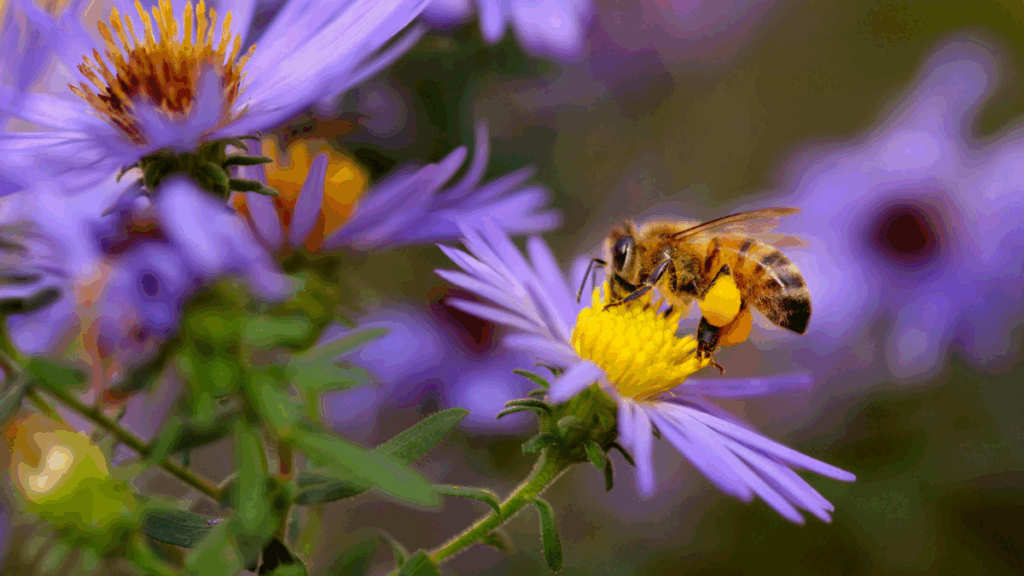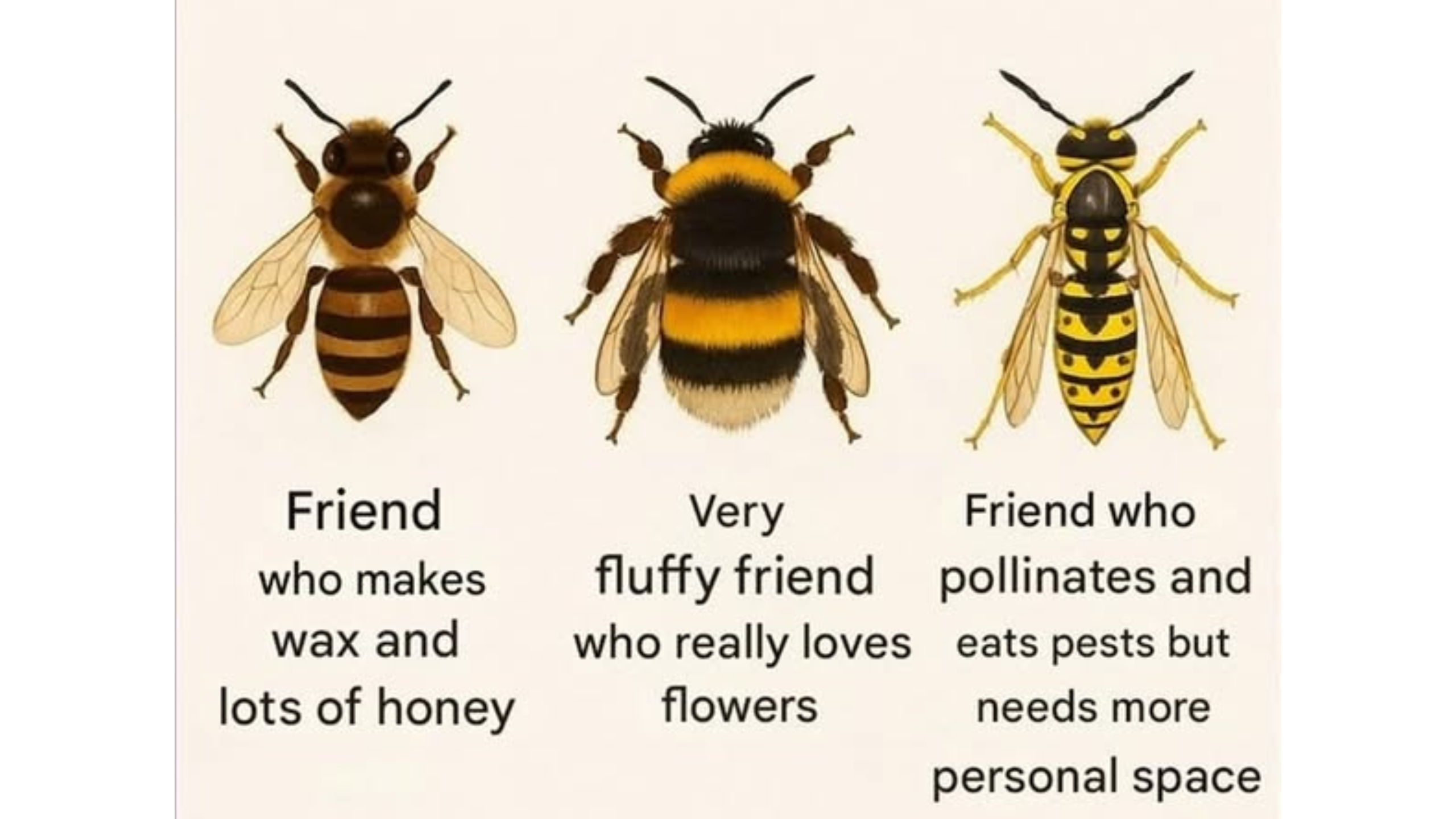Every garden is a tiny ecosystem, teeming with life. Among the most important guests? Pollinators. These unsung heroes—like honeybees, bumblebees, butterflies, and even wasps—are vital for helping plants grow, breed, and produce food. Without them, much of what we eat wouldn’t exist!
If you want your garden to thrive while giving pollinators a helping hand, here’s how to become a true Pollinator Pal—a friend to nature’s hardest workers.
1️⃣ Create a Pollinator Buffet
Pollinators don’t feast at just one time of year—they need nourishment from spring to fall. You can support them by planting a diverse range of nectar-rich flowers that bloom in succession throughout the growing season.
🌼 Think daffodils and crocuses in early spring, lavender and echinacea in summer, and goldenrod and asters in the fall.
🌸 Mix flower shapes, sizes, and colors to attract different kinds of pollinators—some prefer flat flowers, while others like tubular blooms.
A continuous source of food means pollinators won’t need to look far for their next meal—and your garden will be buzzing with life!
2️⃣ Go Native for the Win
Native plants are your garden’s best bet for attracting and sustaining local pollinators. Why?
✔ They’re already adapted to your region’s climate and soil
✔ They often require less maintenance and water
✔ Most importantly, local bees and bugs recognize and rely on them
Visit a nearby nursery or extension service for plant lists that thrive in your area. You’ll be surprised at how much beauty and biodiversity native plants can bring to your space!

3️⃣ Skip the Sprays 🚫
Pesticides and herbicides might keep pests at bay, but they also pose serious threats to beneficial insects. Even “natural” sprays can be harmful.
Instead of reaching for chemicals:
🌿 Try companion planting to deter pests naturally
🐞 Welcome insect allies like ladybugs and lacewings
💡 Spot-treat only when necessary, and do it at night when pollinators are less active
Your garden can be both beautiful and balanced when you work with nature instead of against it.
4️⃣ Offer a Refreshing Rest Stop 💧
Just like us, pollinators get thirsty—especially during hot, dry spells. Provide a water source that’s safe and easy for them to access.
🪨 Use a shallow dish or birdbath
🌊 Add small stones or marbles so insects can perch without drowning
💦 Change the water every few days to keep it fresh and mosquito-free
This simple gesture can be a lifesaver, especially in urban areas where natural water sources are limited.
5️⃣ Let Nature Be a Little Messy 🪵
While tidy gardens may look appealing to us, a bit of mess is a goldmine for pollinators.
🌾 Leave patches of bare soil—many solitary bees nest underground
🍂 Don’t rush to clear away old stems or fallen leaves
🌿 Create small brush piles that offer shelter and nesting sites
By giving insects a place to live, you’re ensuring your garden continues to support pollinator populations all year long.
6️⃣ Respect the Wasps 🐝
Wasps often get a bad reputation, but many are harmless and highly beneficial.
🕷 They help control pests like caterpillars and aphids
🌼 Some even pollinate flowers, just like bees do
Instead of fearing them, give wasps their space. Avoid swatting or disturbing their nests, and they’ll do their part to keep your garden’s ecosystem in check.
Final Buzz
Being a Pollinator Pal is one of the most rewarding ways to connect with nature and enhance your garden’s beauty. A few thoughtful changes can make a world of difference—for the planet, for pollinators, and for you.
So go ahead—plant that flower bed, skip the sprays, and let your garden buzz with life! 🐝🌺
4o


amoxil pills – combamoxi.com buy amoxil pills
diflucan 200mg price – https://gpdifluca.com/# buy diflucan online cheap
buy escitalopram – anxiety pro buy lexapro 20mg online
generic cenforce 100mg – buy cenforce 50mg for sale purchase cenforce online cheap
tadalafil how long to take effect – https://ciltadgn.com/# where can i buy cialis over the counter
cialis prescription assistance program – cialis tadalafil 20mg price canadian pharmacy cialis
cheap viagra no prescription canada – https://strongvpls.com/# cheap viagra
I couldn’t resist commenting. Profoundly written! https://buyfastonl.com/azithromycin.html
The sagacity in this piece is exceptional. tamoxifen for sale
Greetings! Jolly productive advice within this article! It’s the scarcely changes which wish make the largest changes. Thanks a portion in the direction of sharing! https://prohnrg.com/
More peace pieces like this would insinuate the web better. https://ursxdol.com/propecia-tablets-online/
The thoroughness in this section is noteworthy. https://aranitidine.com/fr/ciagra-professional-20-mg/
Greetings! Very gainful recommendation within this article! It’s the little changes which liking espy the largest changes. Thanks a portion in the direction of sharing! https://ondactone.com/product/domperidone/
I’ll certainly bring back to skim more. can i get motilium
Thanks towards putting this up. It’s evidently done. http://furiouslyeclectic.com/forum/member.php?action=profile&uid=24634
buy dapagliflozin 10 mg sale – https://janozin.com/ order forxiga 10 mg generic
order generic orlistat – order orlistat without prescription buy xenical pill
This is the kind of advise I find helpful. http://bbs.51pinzhi.cn/home.php?mod=space&uid=7113381
You can protect yourself and your ancestors by being heedful when buying prescription online. Some pharmacy websites function legally and provide convenience, reclusion, bring in savings and safeguards over the extent of purchasing medicines. buy in TerbinaPharmacy https://terbinafines.com/product/etodolac.html etodolac
More content pieces like this would insinuate the интернет better. TerbinaPharmacy
This is the stripe of topic I have reading.
29212 22350I very glad to uncover this site on bing, just what I was searching for : D as effectively saved to favorites . 824693
https://t.me/officials_pokerdom/3552
https://t.me/s/iGaming_live/4867